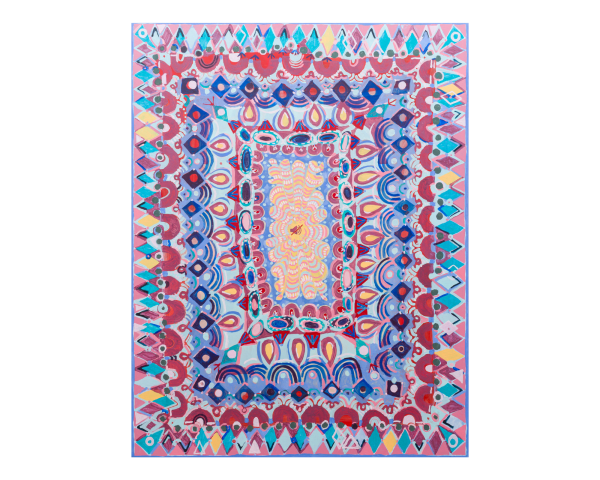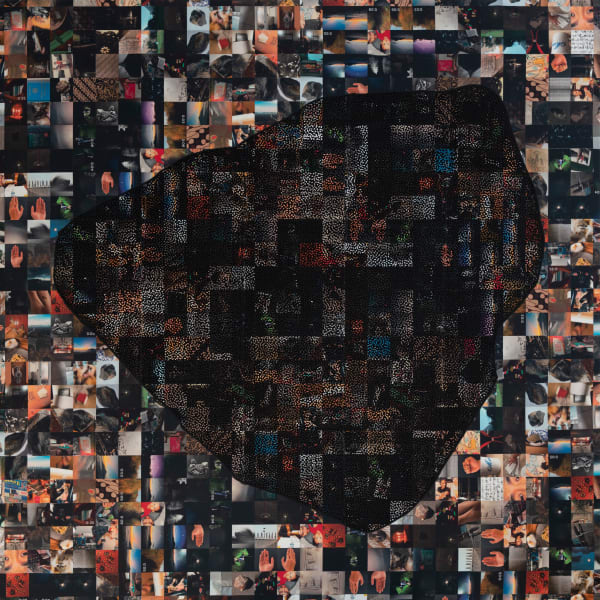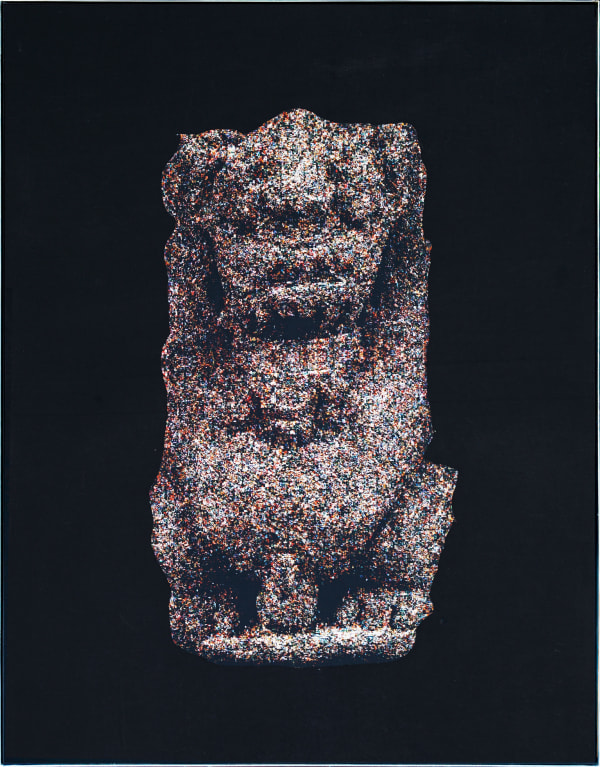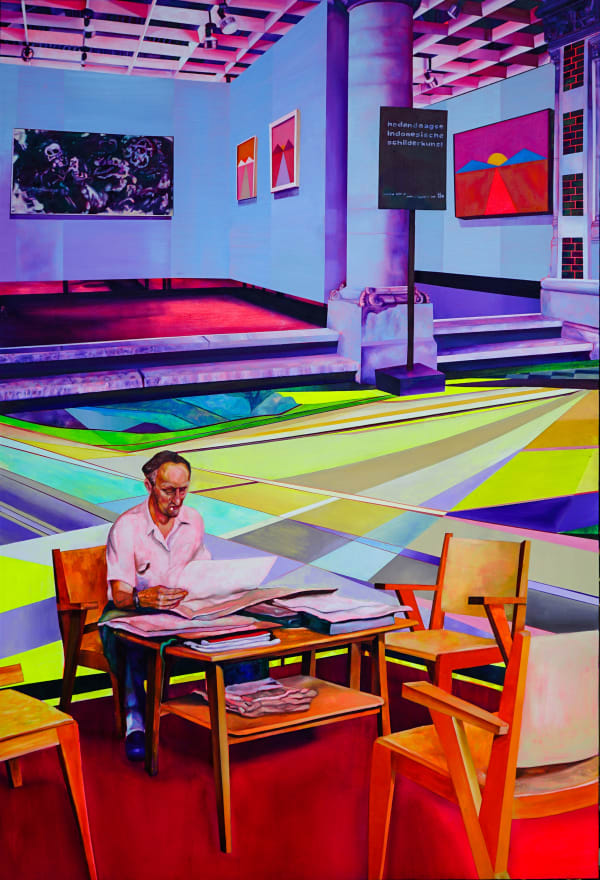Gallery Collection : Where The Sidewalks End
The edge of a sidewalk is an everyday threshold. It marks a transition: from walking to waiting, from urban to natural, from here to somewhere else. The dichotomy of a space where the edge is known and at the same time unknown—a meeting point between the tangible and the imaginative, the mundane and the extraordinary. Where the Sidewalks End describes this place in detail yet it leaves room for the reader to imagine what would the space between sidewalks and the streets feels like. It taps into our childlike playful wonder, to see—the moon-bird, to smell—the peppermint wind, to feel—how the crimson sun burns, and to touch—how the soft white grass feels. These tactile and surreal elements create a canvas for our imagination, asking us to explore not just what such a space could look like, but also how it might feel.
This tension between what is known and what is unknown reflects the broader concept of liminality—a state of transition, of being in-between. In spatial terms, a liminal space or transient space is often described as a hallway, an airport terminal, or an empty playground at night. These places are neither destinations nor origins; they are thresholds that hold potential and uncertainty. But liminality is not just confined to the physical world. It extends into psychological and emotional realms, representing periods of transition, uncertainty, or discomfort—those moments when we find ourselves between where we were and where we are going.
In anthropology and psychology, liminal spaces help us understand how transitions shape human behavior and perception. They are places or states where old structures dissolve, and new possibilities emerge, often accompanied by a sense of ambiguity or even unease. Airports, for instance, are not just spaces for waiting; they symbolize journeys, departures, and arrivals, connecting the physical act of moving with the emotional process of leaving and arriving. Similarly, the sidewalks Silverstein describes are not mere boundaries—they are launchpads into the unknown.
But perhaps what is most intriguing about liminal spaces is how they blur the boundary between the external and internal. While we often think of liminal spaces as existing outside of us, they also reflect how we think, perceive, and interact with the world around us.
In this gallery collection exhibition, Where the Sidewalk Ends by ISA Art Gallery taps into this exchange between the physical and the psychological. It does more than describe a space; it draws us into an experience of transition, where the sidewalk is no longer just concrete beneath our feet but a metaphorical edge of possibility. It made us imagine not just where we are, but where we might go if we let ourselves wander beyond the boundaries of the known. In this sense, the sidewalk—and its end—is a liminal space that exists both around us and within us, asking us to pause, reflect, and embrace the extraordinary hidden within the ordinary.
 Sinta Tantra, Reincarnate, 2023
Sinta Tantra, Reincarnate, 2023 Sinta Tantra, Palm II, 2024
Sinta Tantra, Palm II, 2024 Sinta Tantra, Golden Celeste , 2023
Sinta Tantra, Golden Celeste , 2023 Sinta Tantra, A Composer in Two Worlds , 2023
Sinta Tantra, A Composer in Two Worlds , 2023 Ines Katamso, POST STRATA 3, 2024
Ines Katamso, POST STRATA 3, 2024 Ida Lawrence, (+-x), 2021
Ida Lawrence, (+-x), 2021 Ida Lawrence, Loud Mute, 2023-2024
Ida Lawrence, Loud Mute, 2023-2024 Vivian Lee, Sunset #1, 2024
Vivian Lee, Sunset #1, 2024 Vivian Lee, Earth The Universe 1, 2023
Vivian Lee, Earth The Universe 1, 2023 Rose Cameron, It’s Inappropriate To Wear Red #2, 2024
Rose Cameron, It’s Inappropriate To Wear Red #2, 2024 Rose Cameron, She’s Going To Be The Lucky One, 2024
Rose Cameron, She’s Going To Be The Lucky One, 2024 Rose Cameron, The Sun Just Kissed My Cheeks, 2024
Rose Cameron, The Sun Just Kissed My Cheeks, 2024 Tara Kasenda, Vincit, 2022
Tara Kasenda, Vincit, 2022 Tara Kasenda, Amor, 2022
Tara Kasenda, Amor, 2022 Alexander Sebastianus, Tubuh Diantara #3, 2024
Alexander Sebastianus, Tubuh Diantara #3, 2024 Alexander Sebastianus, Barong-Lot #27-01, 2024
Alexander Sebastianus, Barong-Lot #27-01, 2024 Zico Albaiquni, Een Tussen Twee Werelden (A Life Between Two Worlds), 2020
Zico Albaiquni, Een Tussen Twee Werelden (A Life Between Two Worlds), 2020 Zico Albaiquni, Wanderer above the sea of institution, 2022
Zico Albaiquni, Wanderer above the sea of institution, 2022 Zico Albaiquni, Blinded by Beauty: The Tale of the Orient and the Occident, 2023
Zico Albaiquni, Blinded by Beauty: The Tale of the Orient and the Occident, 2023 Vanessa Jones, Basket Of Fish, 2023
Vanessa Jones, Basket Of Fish, 2023
Join us!
Your one stop solution into bridging art and design.
* denotes required fields
We will process the personal data you have supplied in accordance with our privacy policy (available on request). You can unsubscribe or change your preferences at any time by clicking the link in our emails.
































